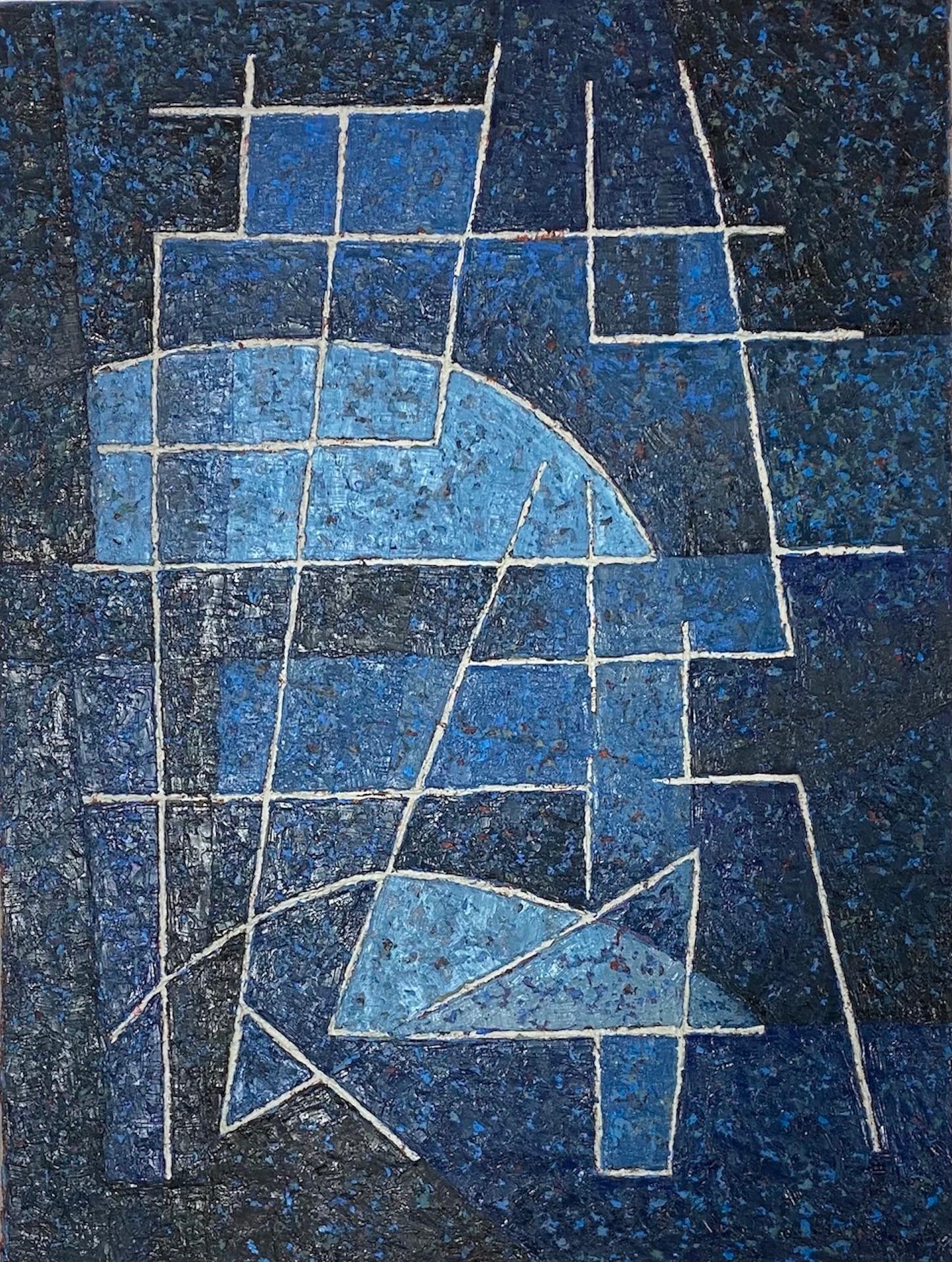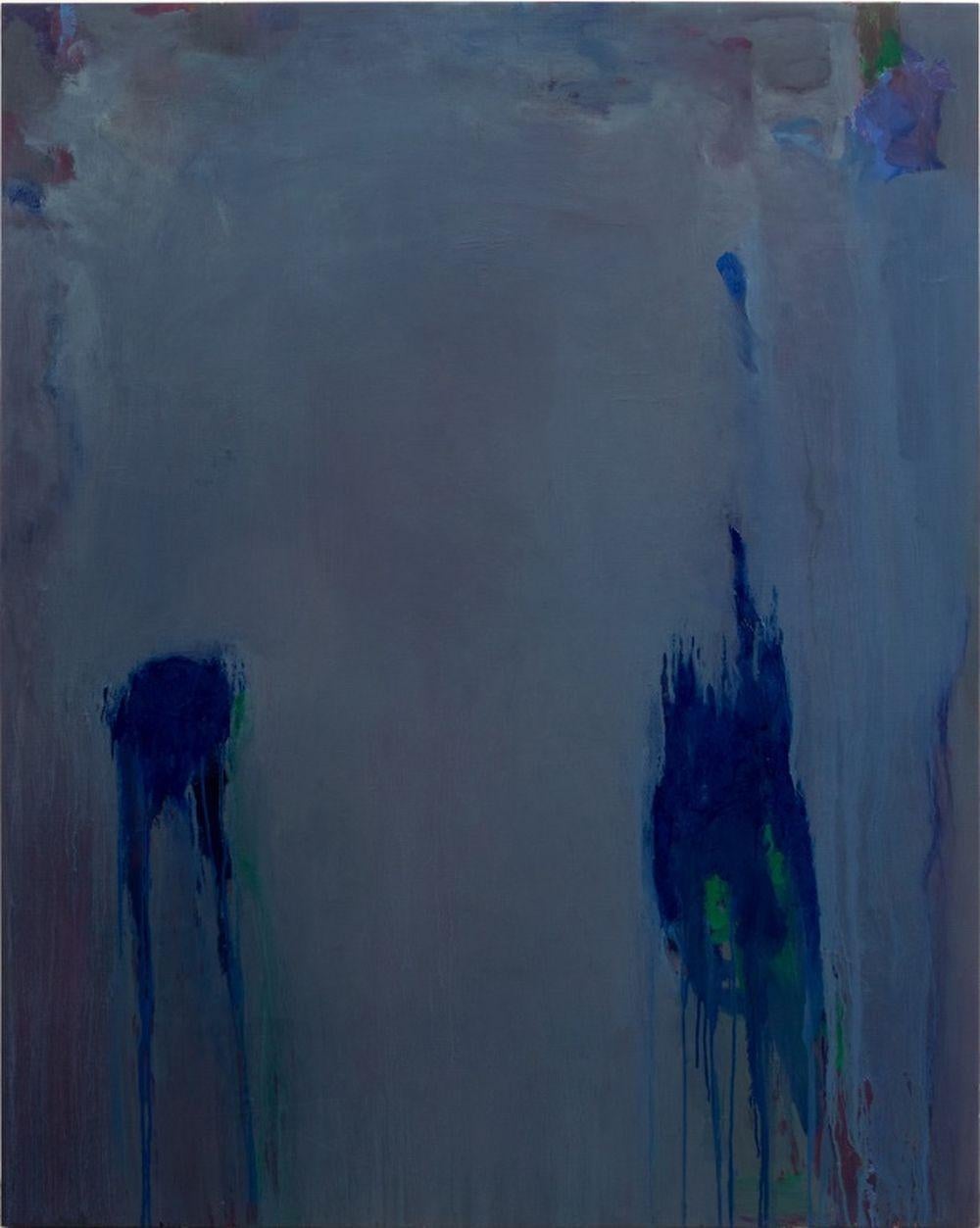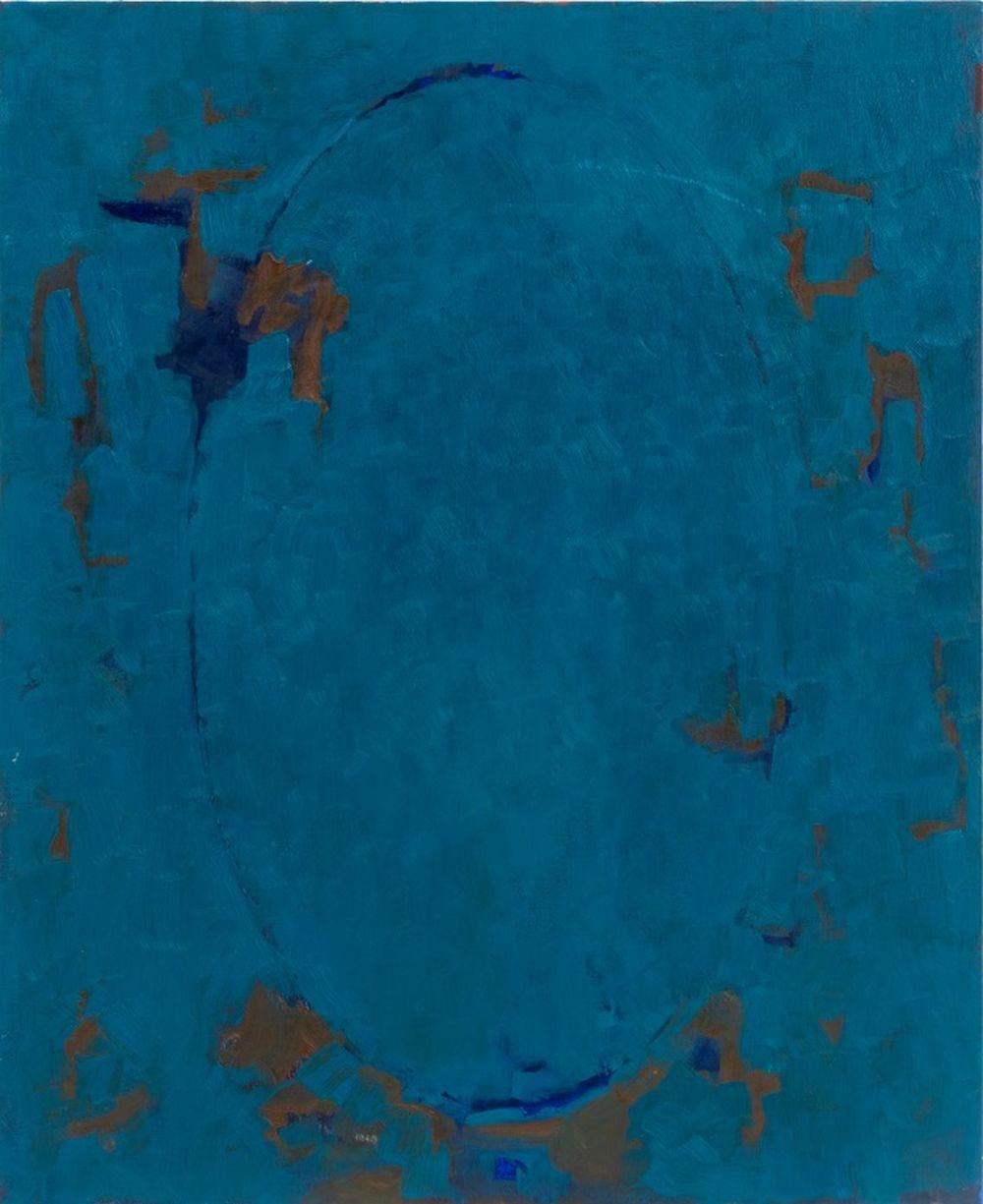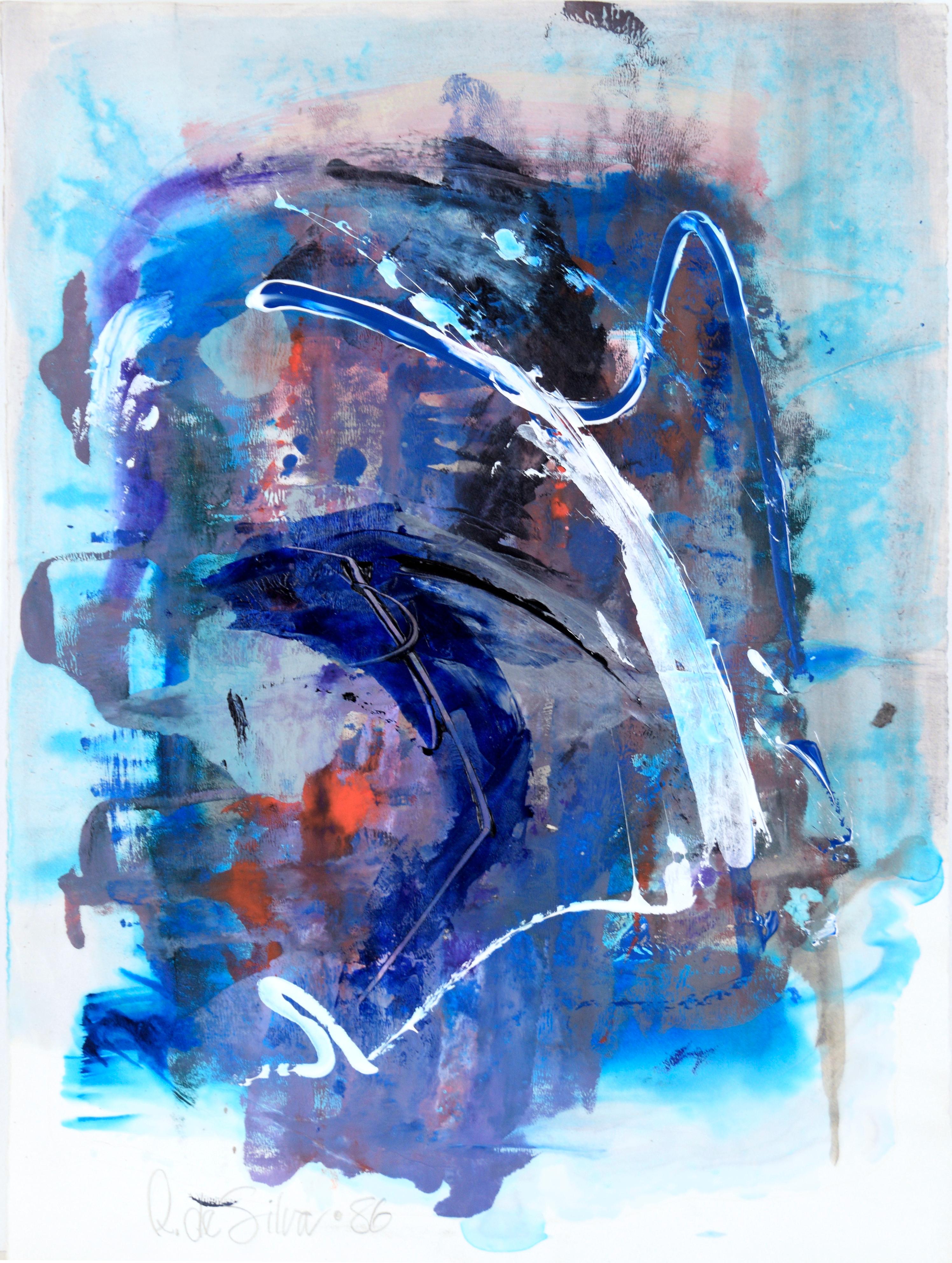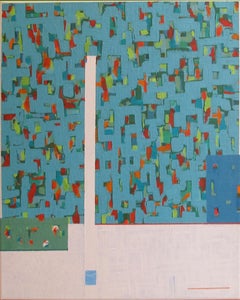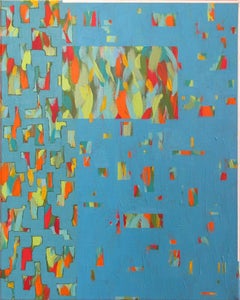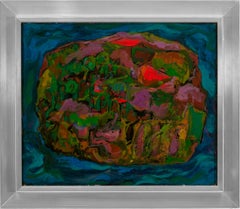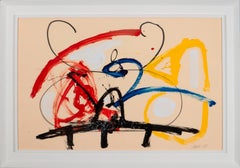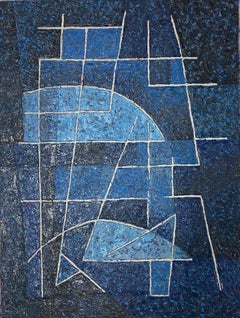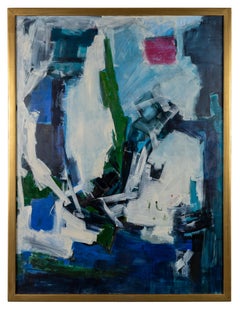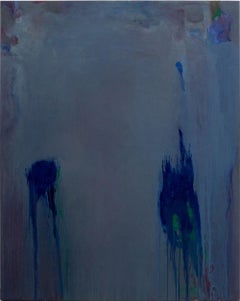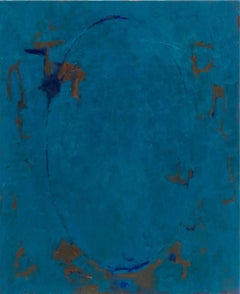Items Similar to "Blue Abstraction" (from the Blue I Series)
Want more images or videos?
Request additional images or videos from the seller
1 of 2
Solomon Ethe"Blue Abstraction" (from the Blue I Series)1973
1973
$45,625
£35,636.74
€40,398.51
CA$65,408.55
A$71,749.61
CHF 37,540.50
MX$853,963.13
NOK 474,159.47
SEK 444,770.06
DKK 301,718.62
About the Item
Jim's of Lambertville is proud to offer this artwork by Solomon Ethe (1924 – 2019)
Solomon Ethe was born on June 22, 1924. A native New Yorker, he received a Masters of Business Administration from Columbia University before continuing onto a career as an economist for 15 years. During his term as an economist, Ethe began to collect the works of many distinguished modern artists, such as Paul Klee, Piet Mondrian, Joseph Cornell, Joan Miró, Francis Picabia, Kazimir Malevich, and František Kupka. Surrounded by these masterful compositions, Ethe's interest in artistic pursuits blossomed, and, in 1960, he opened his first studio in the Flatiron District of New York.
Ethe was entirely self-taught. He used his art collection as reference and study materials to develop his Non-Objective Expressionist style. Ethe's aesthetic is a clear combination of artistic principles pulled from these artists. When viewing his paintings, one can see the influence of Mondrian's geometric grids, the colorful abstractions of Severini and Kupka, Klee and Miró's expressive colorfields, as well as Malevich's commitment to pure abstraction. Ethe was also guided by the techniques of automated drawing and subconscious creation practiced by several of these artists. In these methods, the artist employs "a spontaneous and free-form interaction with the work in progress." Many critics have remarked on the lyrical optimism demonstrated in his paintings, pronounced in evocative brushstrokes, sharp geometric forms, and bright colors, creating a spiritual effect on the viewer.
Ethe has exhibited extensively at New York galleries from 1963 until 2016. His works have also been featured at the Aldrich Museum of Contemporary Art in Ridgefield, CT, 1974; the Huntington Hartford Museum's Gallery of Modern Art in New York, 1968; and the Pennsylvania Academy of the Fine Arts in Philadelphia, PA, 1966. His painting “Concentration” appeared on the cover of the book, Dislocated Memories: Jews, Music and Post War German Culture by Tina Frühauf, published by Oxford University Press in 2014.
Solomon Ethe passed away on March 29, 2019.
- Creator:Solomon Ethe (1924 - 2019)
- Creation Year:1973
- Dimensions:Height: 72 in (182.88 cm)Width: 66 in (167.64 cm)
- Medium:
- Movement & Style:
- Period:
- Condition:
- Gallery Location:Lambertville, NJ
- Reference Number:Seller: JOL071520021stDibs: LU3746533232
About the Seller
5.0
Vetted Professional Seller
Every seller passes strict standards for authenticity and reliability
Established in 1997
1stDibs seller since 2014
39 sales on 1stDibs
Typical response time: Several days
- ShippingRetrieving quote...Shipping from: Lambertville, NJ
- Return Policy
More From This Seller
View All"Staccato XI"
By Solomon Ethe
Located in Lambertville, NJ
Jim's of Lambertville is proud to present this artwork by Solomon Ethe (1924 – 2019)
Solomon Ethe was born on June 22, 1924. A native New Yorker, he rece...
Category
2010s Abstract Expressionist Abstract Paintings
Materials
Canvas, Acrylic
"Staccato I"
By Solomon Ethe
Located in Lambertville, NJ
Jim's of Lambertville is proud to present this artwork by Solomon Ethe (1924 – 2019)
Solomon Ethe was born on June 22, 1924. A native New Yorker, he rece...
Category
2010s Abstract Expressionist Abstract Paintings
Materials
Canvas, Acrylic
"Blue"
By Rex Ashlock
Located in Lambertville, NJ
Jim’s of Lambertville is proud to offer this artwork by:
Rex Ashlock (1918 – 1999)
Born in Spokane, Washington in 1918 Rex Ashlock was known for his abstract, figurative expression...
Category
1960s Abstract Abstract Paintings
Materials
Canvas, Oil
"Blue Two"
By Joseph Amar
Located in Lambertville, NJ
Jim’s of Lambertville is proud to offer this artwork by:
Joseph Amar (1954 – 2001)
Joseph Amar was born in Casablanca, Morocco in 1954 to a Sephardic Jewish father and a Spanish mo...
Category
1970s Abstract Mixed Media
Materials
Paper, Mixed Media
"Blue Black & Green"
By Lloyd Raymond Ney
Located in Lambertville, NJ
Jim’s of Lambertville is proud to offer this artwork by:
Lloyd R. Ney (1893 – 1964)
Called “Bill” by his friends, Lloyd Ney was one of the pioneers of Modernist art in New Hope. Ne...
Category
1960s Abstract Abstract Drawings and Watercolors
Materials
Paper, Watercolor
"Simorgh"
By Solomon Ethe
Located in Lambertville, NJ
Jim's of Lambertville is proud to offer this artwork by Solomon Ethe (1924 – 2019)
Solomon Ethe was born on June 22, 1924. A native New Yorker, he receiv...
Category
1980s Abstract Expressionist Abstract Paintings
Materials
Canvas, Oil
$34,375
You May Also Like
Miles Cole, Blue Composition, Original Abstract Painting, Blue Contemporary Art
By Miles Cole
Located in Deddington, GB
Blue Composition [2017]
Original
Abstract
Oil Paint on Canvas
Image size: H:61 cm x W:46 cm
Complete Size of Unframed Work: H:61 cm x W:46 cm x D:2cm
Framed Size: H:64 cm x W:50 cm x...
Category
21st Century and Contemporary Abstract Abstract Paintings
Materials
Canvas, Oil
Abstract in Blue
By Margaret Peggy Reventlow
Located in Sheffield, MA
Peggy Reventlow
American, 1915-2014
Abstract in Blue
Oil on canvas
36 by 48 in, w/ frame 38 ¼ by 50 ¼ in
Signed verso
Reventlow studied at Le Cours Maintnon in Paris and at Le Coll...
Category
Late 20th Century Abstract Abstract Paintings
Materials
Oil
Abstract Composition in Blue
Located in Astoria, NY
Robert O'Meara (American, 1957-2024), Abstract Composition in Blue, Oil on Canvas, blue-gray field with navy drips, apparently unsigned, unframed. 60" H x 48" W. Provenance: From a 3...
Category
21st Century and Contemporary Abstract Abstract Paintings
Materials
Canvas, Oil
Abstract Composition in Blue
Located in Astoria, NY
Robert O'Meara (American, 1957-2024), Abstract Composition in Blue, Oil on Canvas, with central oval form, signed to verso, unframed. 27" H x 22" W. Provenance: From a 333 East 75th ...
Category
21st Century and Contemporary Contemporary Abstract Paintings
Materials
Canvas, Oil
A Case of the Blues - Abstract Expressionism
Located in Soquel, CA
A Case of the Blues - Abstract Expressionism
An abstract expressionist painting in vibrant hues of blue swimming in multiple layers and colors, creating a work that is defined by d...
Category
21st Century and Contemporary Abstract Expressionist Abstract Paintings
Materials
Paper, Acrylic, Gouache, Latex
Ultramarine Blue Abstract
By Juan Jose Garay
Located in LAS ROZAS DE MADRID, ES
Painting: Acrylic on Canvas.
Esta obra es una explosión de energía y pasión que quise capturar con colores vivos y movimientos caóticos. Utilicé acrílico y esmalte para crear una te...
Category
21st Century and Contemporary Abstract Expressionist Interior Paintings
Materials
Canvas, Acrylic
